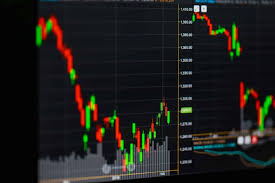
The Ultimate Guide to Forex Day Trading: Strategies, Tips, and Techniques
If you’re looking to maximize your profits in the fast-moving world of Forex trading, you’ve come to the right place. forex day trading ZAR Trading provides insights into the essential knowledge you need for day trading success. In the following sections, we will explore various aspects of Forex day trading, including different strategies, tips for effective trading, and common mistakes to avoid.
Understanding Forex Day Trading
Forex day trading involves the buying and selling of currency pairs within the same trading day. Unlike long-term traders, day traders take advantage of small price fluctuations that occur throughout the trading day. Successful day traders are often skilled at analyzing market trends and reading financial charts. The objective is to close all positions by the end of the trading day to avoid the risks associated with overnight market shifts.
Key Characteristics of Successful Day Traders
To succeed in Forex day trading, certain characteristics are essential:
- Discipline: Day traders need to stick to their trading plan and manage emotions that could lead to impulsive decisions.
- Patience: Effective day trading requires waiting for the right opportunities to enter and exit trades.
- Risk Management: Successful traders employ risk management strategies to protect their capital, which is crucial in a volatile market.
- Market Knowledge: Being aware of global economic events and market sentiment can significantly influence price movements.
Forex Day Trading Strategies
There are various strategies day traders can employ to achieve success:
1. Scalping
Scalping is a popular strategy where traders aim for quick profits by making small trades throughout the day. This approach requires intense focus and a solid risk management plan, as the goal is to capitalize on minor price differences.
2. Momentum Trading
This strategy relies on identifying stocks or currency pairs that are moving significantly in one direction and trading them based on the momentum. It is essential to utilize indicators to confirm the strength of the movement.
3. Range Trading
Range trading involves identifying key support and resistance levels within price ranges that a currency pair fluctuates. This strategy aims to buy at the lower end of the range and sell at the upper end.
4. Breakout Trading

Breakout traders look for significant price levels where a currency pair breaks through a support or resistance level. The idea is to enter a trade when the price shows a strong movement through these levels, indicating a potential trend.
Tools and Indicators for Day Trading
To effectively day trade, traders often rely on various tools and indicators:
1. Moving Averages
Moving averages help smooth out price data to identify trends more clearly. A common approach is to use a short-term moving average in conjunction with a longer-term moving average to identify potential buy and sell signals.
2. Relative Strength Index (RSI)
The RSI is a momentum oscillator that measures the speed and change of price movements. A value above 70 indicates that a currency is overbought, while a value below 30 suggests it is oversold.
3. Bollinger Bands
Bollinger Bands provide insight into price volatility and are often used to identify potential buy or sell signals based on price movements against the bands.
Risk Management in Forex Day Trading
Risk management should always be a priority for Forex day traders. Here are several best practices:
- Use Stop-Loss Orders: This automated tool helps minimize losses by closing your position once it reaches a predetermined price point.
- Limit Position Sizes: Only risk a small percentage of your total equity on any single trade. This approach protects your capital from large losses.
- Diversify Your Trades: Avoid concentrating your trading capital in a single position or currency pair.
Common Mistakes to Avoid
While day trading can be profitable, it also comes with pitfalls. Here are some common mistakes to be aware of:
- Chasing Losses: Trying to recover losses by overtrading can lead to even bigger losses. Stick to your plan and accept losses as part of trading.
- Neglecting Market Conditions: Events such as economic releases or geopolitical tensions can dramatically affect the market. Stay informed about the latest news.
- Inadequate Preparation: Entering trades without proper analysis or planning can lead to poor results. Spend time preparing and analyzing before making trades.
Conclusion
Forex day trading can be a lucrative endeavor for those who take the time to educate themselves and develop effective strategies. By understanding different trading techniques, employing risk management practices, and avoiding common pitfalls, you can position yourself for success in the dynamic world of Forex trading. Remember, patience and continuous learning are key elements for thriving as a day trader.

Leave A Comment